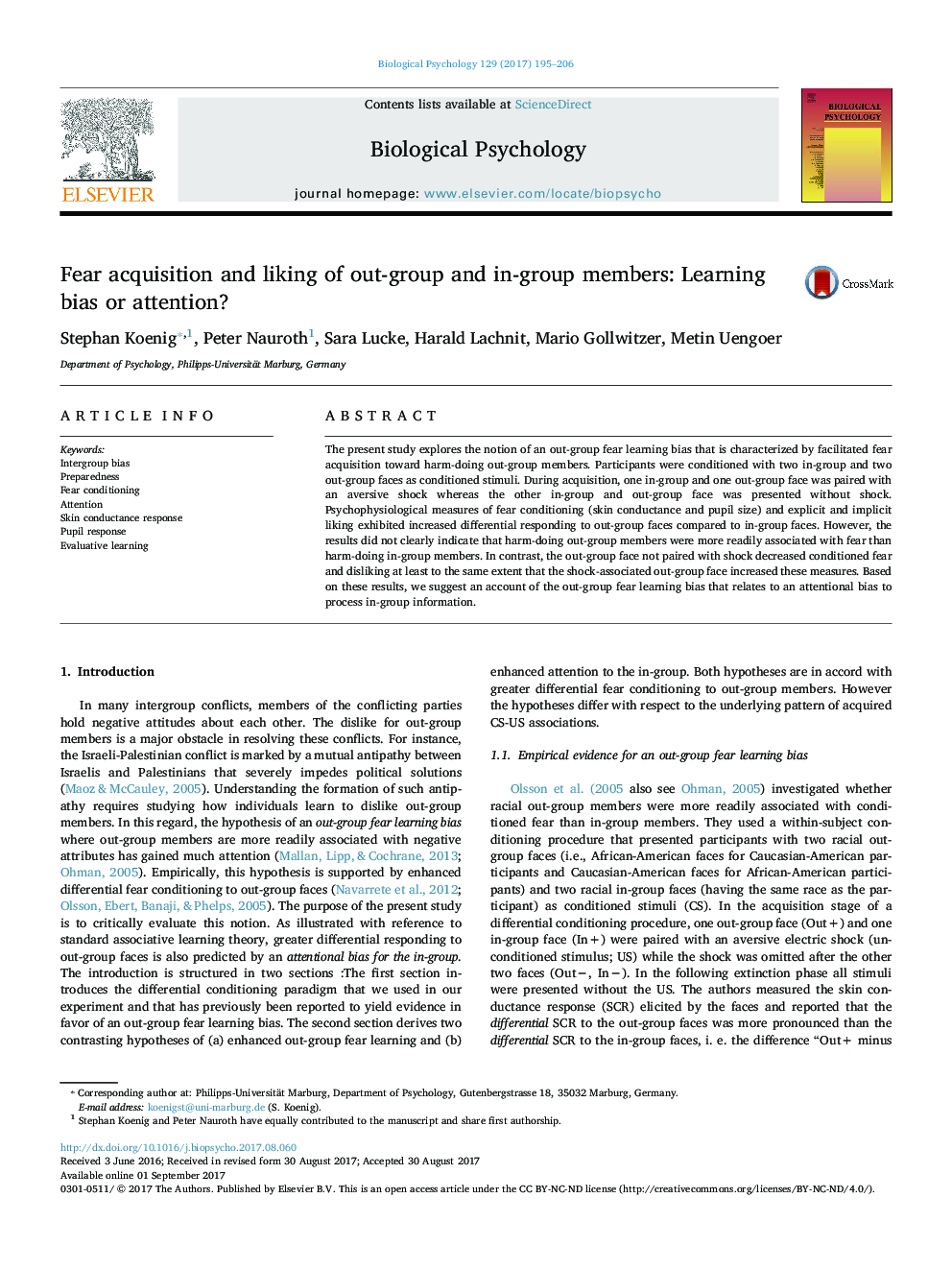| Article ID | Journal | Published Year | Pages | File Type |
|---|---|---|---|---|
| 5040354 | Biological Psychology | 2017 | 12 Pages |
â¢We report results from human differential fear conditioning Out+, Outâ, In+, Inâ with in-group and out-group faces.â¢Our measures includes physiological variables (skin conductance, pupil dilation), explicit evaluative ratings and a test for implicit liking (APT).â¢Across all measures our results reveal a better discrimination of out-group faces where the Out+ was an accentuated signal for harm but the Outâ face also was an effective signal for safety from harm.â¢We provide computer simulation of the Rescorla-Wagner theory to illustrate that the pattern of results is not in accord with the hypothesis that out-group members in general are more readily associated with an aversive events.â¢We propose an alternative attentional explanation that rests on the assumption of a positive in-group bias.
The present study explores the notion of an out-group fear learning bias that is characterized by facilitated fear acquisition toward harm-doing out-group members. Participants were conditioned with two in-group and two out-group faces as conditioned stimuli. During acquisition, one in-group and one out-group face was paired with an aversive shock whereas the other in-group and out-group face was presented without shock. Psychophysiological measures of fear conditioning (skin conductance and pupil size) and explicit and implicit liking exhibited increased differential responding to out-group faces compared to in-group faces. However, the results did not clearly indicate that harm-doing out-group members were more readily associated with fear than harm-doing in-group members. In contrast, the out-group face not paired with shock decreased conditioned fear and disliking at least to the same extent that the shock-associated out-group face increased these measures. Based on these results, we suggest an account of the out-group fear learning bias that relates to an attentional bias to process in-group information.
